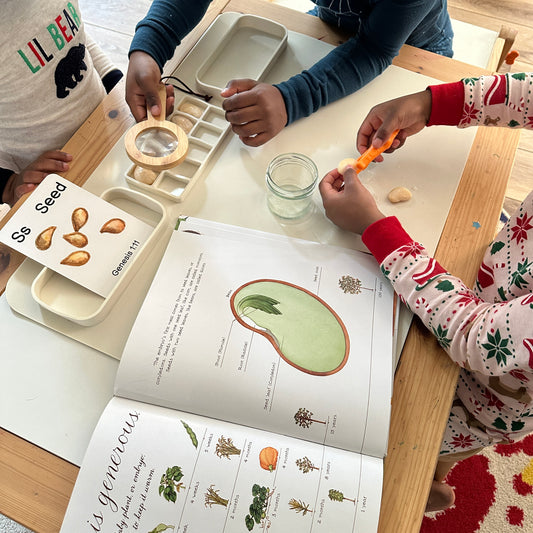
Keys to Multi-age Learning Success at Home
Share
Homeschooling multiple children has a unique advantage: a multi-age classroom.
Now, you may be thinking, "Wait... doesn't that make this... harder?"
Unfortunately, many families who are considering homeschooling but have more than one kiddo get intimidated thinking they’ll have to do 2+ consecutive school days all in 24 hours to ensure each child gets what they need. They’re worried that:
- Each child’s learning style will require an entirely different approach and 1:1 focus for every subject
- Older and younger students have to have completely separate learning plans and schedules
- Someone will fall behind
- School will take all day trying to teach everyone what they need to learn at their level.
The truth is, each child IS unique and has their own learning style, strengths and academic needs. But you absolutely CAN learn together, meet everyone’s needs AND have plenty of sunlight left to enjoy at the end of your school day!
Because guess what...
Multi-age learning in a one-room schoolhouse was the standard in America until the mid-19th century when grade-level systems began to take over.
And in fact, even the apostles relied on this teaching strategy for effective discipleship. In Titus 2, Paul has written to Titus, encouraging him to teach the older men and women, and emphasizes that the older “must train the younger…” (See Titus 2:1-6)
Many private schools and homeschool rooms still enjoy this model of learning. In an article published by Rasmussen University, several benefits of multi-age classrooms were cited. Here are my favorite 4:
- Individualized learning: instruction can be tailored to each student's abilities, interests, and developmental stage.
- Peer learning and teaching: older children often act as mentors and while younger students observe and learn from what’s being modeled by their older classmates.
- Social and emotional development: Younger children learn important social skills from older peers, while older children develop empathy and leadership while working alongside younger children.
- Inclusivity: Students with diverse abilities and learning styles can be accommodated within the same classroom, promoting a sense of belonging for all students.
Here’s how you can experience the benefits of a multi-age classroom at home:
Step 1: Identify your range.
In academic settings, multi-age classrooms have been shown to work well for students within 1-3 years of each other.
If you have larger age gaps between your children, a family read-aloud or Bible lesson can be a great way to bring everyone together. Use these as springboards for memory work, handwriting practice or writing prompts, according to each child’s learning level.
Step 2: Choose your subjects.
In our home, we do math and language arts at each child’s individual level (though they often choose to sit in on and “help” with each other’s lessons). Our planned family subjects are science, social studies, music theory/appreciation and art.
For these subjects, you might follow a 4 year cycle that increases in depth each time you come back around.
For example, with history, you could cycle through ancient, medieval, early modern and modern history and then begin the cycle again. You can vary the level of challenge for older and younger students using a variety of activities like projects, writing/retelling or reenactment assignments.
Step 3: Make it multi-sensory!
No matter what ages you’re teaching, engaging your children’s senses is a great way to bring everyone together to explore a topic and share their own insights. This allows each child to lean into their strengths and impart their unique perspective, which enriches the study for everyone.
- Draw or paint a scene from text that’s being read aloud
- Play games together to practice math concepts or put phonics rules in action
- Use clay to sculpt artifacts described in historical accounts
- Conduct experiments, providing older children with the opportunity to lead and support younger children where tasks require greater fine motor ability, for example.
In life, people are rarely, if ever, surrounded by others of their exact same age. We are constantly interacting with, teaching and learning from others from all different backgrounds and with varying interests and strengths.
When we cultivate a multi-age learning environment at home, it teaches our children to appreciate what they can learn from people older and younger than they are. It fosters respect that builds true leadership, empathy, humility and Christ-like compassion.



